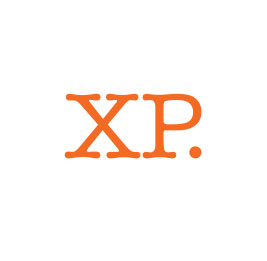You will be sitting the test in your Music X-Block in the first week back.
You have been set a number of I AM LEARNING and MyMaths exercises.
There are also lots of links and advice in the announcements further down this stream.
CHEFISTRY VIDEO
This will be a useful resource for your revision.
What has chemistry got to do with boiling an egg? Chefistry: Admiral
LT: I can plot positive and negative points on x and y axes.
You will be expected to plot some given points on axes.
LT: I can backwards plan using units of time.
You will be expected to work with given time values to work out how to cook a specific meal.
LT: I can comment upon experimental observations in terms of percentage change.
You will be expected to be able to calculate 1% and 10% of any whole number. The use these two values to work out any percentage between 2% and 99%.
Remember:
To calculate 10% of an amount, divide by 10.
To calculate 1% of an amount, divide by 100.
LT: I can calculate the volume of simple 3D shapes.
You will be expected to know the formulae and calculate volumes of cuboids and cylinders. This means you will also need to know the formula for area of a circle.
Use the links to help you.
BBC – KS3 Maths – Volume – Revision 1SafeFrame Container
BBC – KS3 Maths – Volume – Revision 2SafeFrame Container
BBC – KS3 Maths – Volume – Revision 3SafeFrame Container
LT: I can compare and contrast states of matter using the particle model.
There will be questions on the test asking you to draw and comment upon diagrams. You will also be expected to know the properties of each state i.e density, whether they can be compressed, if they strong weak or no bonds etc.
Use the links to help you.
BBC – KS3 Chemistry – Solids, liquids and gases – Revision 1SafeFrame Container
BBC – KS3 Chemistry – Solids, liquids and gases – Revision 2SafeFrame Container
BBC – KS3 Chemistry – Solids, liquids and gases – Revision 3SafeFrame Container
BBC – KS3 Chemistry – Solids, liquids and gases – Revision 4SafeFrame Container
LT: I can explain the difference between atoms, elements, compounds and mixtures.
LT: I can explain how diffusion happens using the particle model.
LT: I can explain how molecules mix in a solution using the particle model.
There will be questions on the test asking you to draw diagrams. You will be expected to be able to explain diffusion (i.e. why could we smell the toast?) and dissolving (i.e. where did the salt crystal go?)
Use the links to help you.
BBC – KS3 Chemistry – Pure and impure chemical substances – Revision 1SafeFrame Container
BBC – KS3 Chemistry – Pure and impure chemical substances – Revision 2SafeFrame Container
BBC – KS3 Chemistry – Pure and impure chemical substances – Revision 3SafeFrame Container
BBC – KS3 Chemistry – Pure and impure chemical substances – Revision 4SafeFrame Container
BBC – KS3 Chemistry – Atoms, elements and compounds – Revision 1SafeFrame Container
BBC – KS3 Chemistry – Atoms, elements and compounds – Revision 2SafeFrame Container
BBC – KS3 Chemistry – Atoms, elements and compounds – Revision 3SafeFrame Container
BBC – KS3 Chemistry – Atoms, elements and compounds – Revision 4SafeFrame Container
BBC – KS3 Chemistry – Atoms, elements and compounds – Revision 5SafeFrame Container
LT: I can predict the properties of metals using the periodic table
LT: I can explain the principles underlying the periodic table.
There will be questions on the test asking you to label and use the periodic table. Think about groups, periods, properties, metals and non metals and their properties.
Use the links to help you.
BBC – KS3 Chemistry – The periodic table – Revision 1SafeFrame Container
BBC – KS3 Chemistry – The periodic table – Revision 2SafeFrame Container
BBC – KS3 Chemistry – The periodic table – Revision 3SafeFrame Container
BBC – KS3 Chemistry – The periodic table – Revision 4SafeFrame Container
LT: I can determine the energy content of a meal
There will be questions on the test asking you to use food labels to say how many calories are in a meal.
Use the link to help revise.
BBC – KS3 Physics – Energy in the home – Revision 1SafeFrame Container
